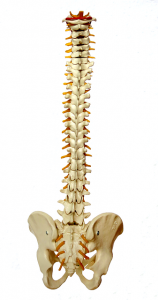Is Physical Therapy Effective For Your Pain?
An important question to ask of any treatment is whether or not it is effective. If an intervention will help you or not is a key question because no one wants to waste their time on something that will not help them feel better. I have seen many people who have had treatment for months or years and do not feel better from it. So the big question of: is physical therapy effective for your pain comes with a complex answer.
It depends.
Is Physical Therapy Effective For Spine Pain?
Physical therapy has been shown to be effective for both neck and low back pain. With a large number of studies and practice guides neck and lower back pain have been shown to improve with PT. Although there are a number of treatments that are in use by physical therapists the most effective treatments for neck and back pain are active interventions and manual therapy. Interventions such as heat, ice, and electrical stim do not have the same positive effect on spine pain. When it comes to physical therapy for for spine pain the answer to the question is yes. With the right PT you will see recovery.
Neck Pain
The clinical practice guidelines for neck pain and physical therapy are clear. If you have neck pain for a short period of time (less than 6 weeks) you will benefit from thoracic thrust mobilization, neck mobility, and strengthening of the neck and shoulders. There is minimal evidence that people need neck manipulation. For pain less than 3 months a program of neck and shoulder exercises is key to recover. For people with pain more than 3 months thrust mobilization and specific exercises for your pain are key. You may also benefit from other techniques such as dry needling and traction.
Low Back Pain
For lower back pain the clinical practice guidelines for effective physical therapy should start with specific movements to assess the reduction of pain and end with exercise and lifestyle modifications. Hands on care which includes thrust and non thrust mobilization should be a part of your first few sessions especially if you have not had pain for a long period of time. For long term pain a gradual increase in activity level and focus on the areas of your day you struggle with is key to recover.
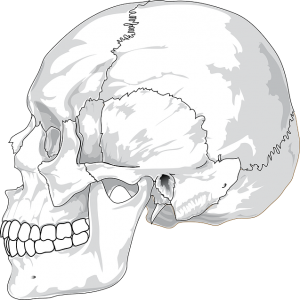
Is Physical Therapy Effective For Jaw Pain?
Physical therapy can help some types of jaw pain. With a specific functional classification system for jaw pain we can help you identify if the pain is from muscle, joint, is referred, or is due to another issue. We have the training to know when we can help your jaw pain and we know when you need something else. Jaw pain can relate to headaches and neck pain which will need to receive treatment as well if elimination of jaw pain is your goal. With a comprehensive exam Ascend Orthopaedics will allow for reduced pain and recovery of function in regards to you jaw pain.
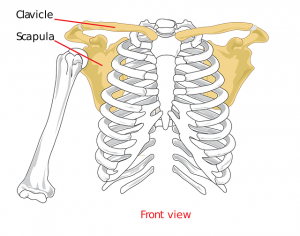
Is Physical Therapy Effective For Shoulder Pain?
Shoulder pain can have many causes. Weakness, trauma, degenerative changes, and fibrosis are all issues that people will see a physical therapist for. PTs also can determine if your pain is due to neck or other region pain such as lung or nerve issues. When you have a confirmed shoulder issue there are many things PTs can do to help relieve your pain.
When it comes to weakness a PT can help you address the areas that need work and give you a specific program to reduce your pain. People who have pain due to trauma of the shoulder need to know what they should and should not do to recover. With guidance you can recover from trauma faster and feel better sooner. For degenerative changes PTs can create a program for you to address your needs. Reducing movement restrictions, pain reduction, and learning how to compensate are all key. This means that PT can help reduce your pain for the most common reasons for shoulder pain.
Rotator Cuff Tears
Rotator cuff tears are common and occur as we get older. With rotator cuff tears you need to recover motion, regain your shoulder strength, and focus the activities that you have difficulty with. An appropriate progression is key and recovery takes about 3 months. During this time you should have 7 to 8 visits with a gradual progression of your home program and hands on treatment to manage any pain. This will help reduce or eliminate your pain and have you see a gradual increase in your activity level.
Frozen Shoulder
Fibrosis, also known as a frozen shoulder or adhesive capsulitis, improves with time according to PT practice guidelines. Physical therapy is effective in helping you understand what you should and should not do. This can help you manage the pain and get you back to as many things as you can as soon as possible. Beyond this advice and focus on a few key things PT is not more effective than waiting for time to pass. This means that if you have a frozen shoulder the benefit of PT is found in the first 2 to 4 visits and after that you will be wasting your time. The visits not only help you know what you can do to recover but will confirm that you have a true frozen shoulder and not another issue.

Is Physical Therapy Effective For Elbow Pain?
Elbow pain can be due to overuse, trauma, or nerve related. Each one of these issues can improve with physical therapy. The main difference between them is the time frame that people need to recover and the type of treatment needed. With elbow pain one size does not fit all and your day to day activities will dictate what you should do for your pain.
Elbow Overuse Injuries
Overuse in elbow pain tends to be due to our day to day activities. This can range from the sports we play or just typing for work. Each issue needs different treatment but these types of elbow pain tend to need some type of activity to feel better. Without the correct amount of exercise and correct knowledge of how much pain is okay these issues tend to linger for long periods of time. PT is effective in helping people reduce and eliminate their elbow pain due to overuse.
Elbow Trauma
Trauma of the elbow tends to have a combination of issues which depend on the damage from the trauma. With a fracture for example PT can help you regain motion but it does not always get you back to 100%. A loss of motion or pain that takes a long period of time to feel better is common. A PT is effective in reducing elbow pain due to trauma by helping you work in to your pain as appropriate. This means that you will get more motion back, have better control of your pain, and see better use of your elbow in the long term. PT can be very effective when it comes to elbow pain after trauma.
Elbow Nerve Pain
Nerve pain in the elbow can be tricky and does not always respond to any treatment. This is because nerve needs time to heal. This means that with the correct advice and treatment your pain may linger for more than 6 months. To recover PT will guide you with the correct movements to eliminate your pain and help you understand your pain. This results in better recovery and can help you work around your nerve pain. 5 to 6 visits will help you understand what you need and give you the correct exercises and information to recover from a nerve pain in the elbow.
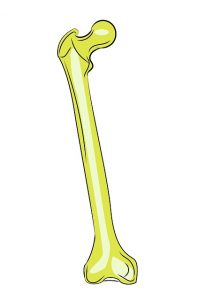
Is Physical Therapy Effective For Hip Pain?
Hip pain tends to be due to either joint or muscle. For instance those with arthritis and hip pain benefit from changes in activity and hands on treatment. Breaks/fractures are a separate issue, however, that requires surgery. After a surgery however you can benefit from physical therapy. By identifying the issues you specifically need to address you can see a reduction in pain and improve your ability to complete activities.
Hip Joint Pain
Joint pain in the hip comes from lack of motion or joint pain when it moves over a sensitive spot. With hands on care, manual therapy, and exercises designed for you to reduce your pain you will see a benefit from PT. This requires an examination in person as every person has slightly different symptoms. One size does not fit all for hip joint pain.
Hip Muscle Pain
Muscle pain comes from overuse of the muscle or from muscle weakness. When you have muscle overuse it is hard to get back to the things that you want to do. PT helps guide you back to the things you enjoy in a way that limits your chance for setback. In regards to muscle weakness we will identify the areas that need to get stronger and give you the appropriate progression to get rid of your pain and get you back to the things you enjoy.
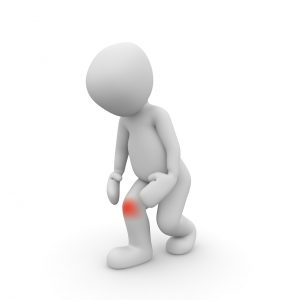
Is Physical Therapy Effective For Knee Pain?
Knee pain can be due to a number of things. Reasons people attribute knee pain to that PT can help include arthritis, knee surgeries, and strains. Back pain that causes knee pain can also benefit from PT. Knee pain is one of the most common reasons that people will go to see a physical therapist. This is because PT can consistently help most people with knee pain.
Knee Arthritis
PT is helpful in those with knee arthritis because pain attributed to arthritis occurs over time and people who are more active despite arthritis have less pain. We can help you reduce your pain with a gradual increase in activity with a goal of improving your mobility and function. This has been shown to delay the need for a knee replacement. This will allow you to do more despite the fact arthritis increases over time.
Knee Surgery
Knee surgery ranges from ACL and PCL surgeries to knee replacements. After surgery it is key to regain motion and then regain strength. If you do not meet these 2 goals it is unlikely you will see a complete recovery. Physical therapy is effective in helping people recover after surgery because we help you regain your motion and strength and assist in your transition to an increase in activity. If your activity goal is to walk or run PT can help you get there after surgery. Without PT you risk complications and may be unable to fully recover.
Strains
Strains are a common injury people tend to recover from with rest and a gradual return to your usual activities. PT can assist in your recovery by helping reduce pain and swelling from the injury. We then help you regain your strength and use of the muscle. A strain results in damage to your muscle tissue. A focus on recovery of the muscle will reduce your pain and help you feel better faster.

Is Physical Therapy Effective For Ankle Pain?
Ankle pain comes in many forms. These include chronic ankle instability, plantar fascitis, and sprains/strains to name a few. These issue all have solid research that says PT is effective in reducing pain in the ankle from these issues. Although not an exhaustive list these are the most common ankle issues PT can help you recover from.
Chronic Ankle Instability
Chronic ankle instability (CAI) results from multiple ankle sprains or injuries. This turns into chronic ankle pain and an increase in the rate of ankle injuries. This pain will continue without treatment. To reduce your future ankle sprains and reduce your pain from CAI you need interventions that improve your ankle control, reduce your pain, and improve your ability to complete your daily activities including your recreational activities. A focus on your specific activities will help reduce your pain and increase your ability to do the things you enjoy.
Plantar Heel Pain
Plantar fasciitis can be a debilitating condition. This condition benefits from specific physical therapy interventions including specific exercises, hands on treatment, dry needling, and improving your foot control. This condition typically takes time to recover and pain tends to be a component with recovery. This means that people will have a small to moderate increase in pain with their recovery. But week to week we expect to see a gradual reduction in pain in the morning and with activity. With faster recovery with PT is very effective for heel pain.
Ankle Sprains
Ankle sprains requires treatment not just to recover but to prevent future ankle sprains. People who go to physical therapy will have a chance to sprain their ankle again 60% of the time. For those that go to PT they have a 12% chance to have another sprain. Many first ankle sprains feel better with time but without the appropriate treatment the chance to injure again is high. Treatment for ankle sprains should include ankle control, hands on treatment, and strength with a gradual increase in difficulty to improve your recovery.

Is Physical Therapy Effective For My Pain?
As you can see there are a number of things physical therapy is an effective treatment for. The above issues are not a list of everything physical therapy can address. The purpose of this list is to help people know that many areas of pain can benefit from PT. If you have a question if your issue can benefit from physical therapist you can call us at (267) 777-9872. You can also schedule a free consult with one of our specialists with the link below. If every person with pain went to a PT early there would be far fewer people in pain. Early PT is more effective so do not delay in seeing a physical therapist for your issue.


